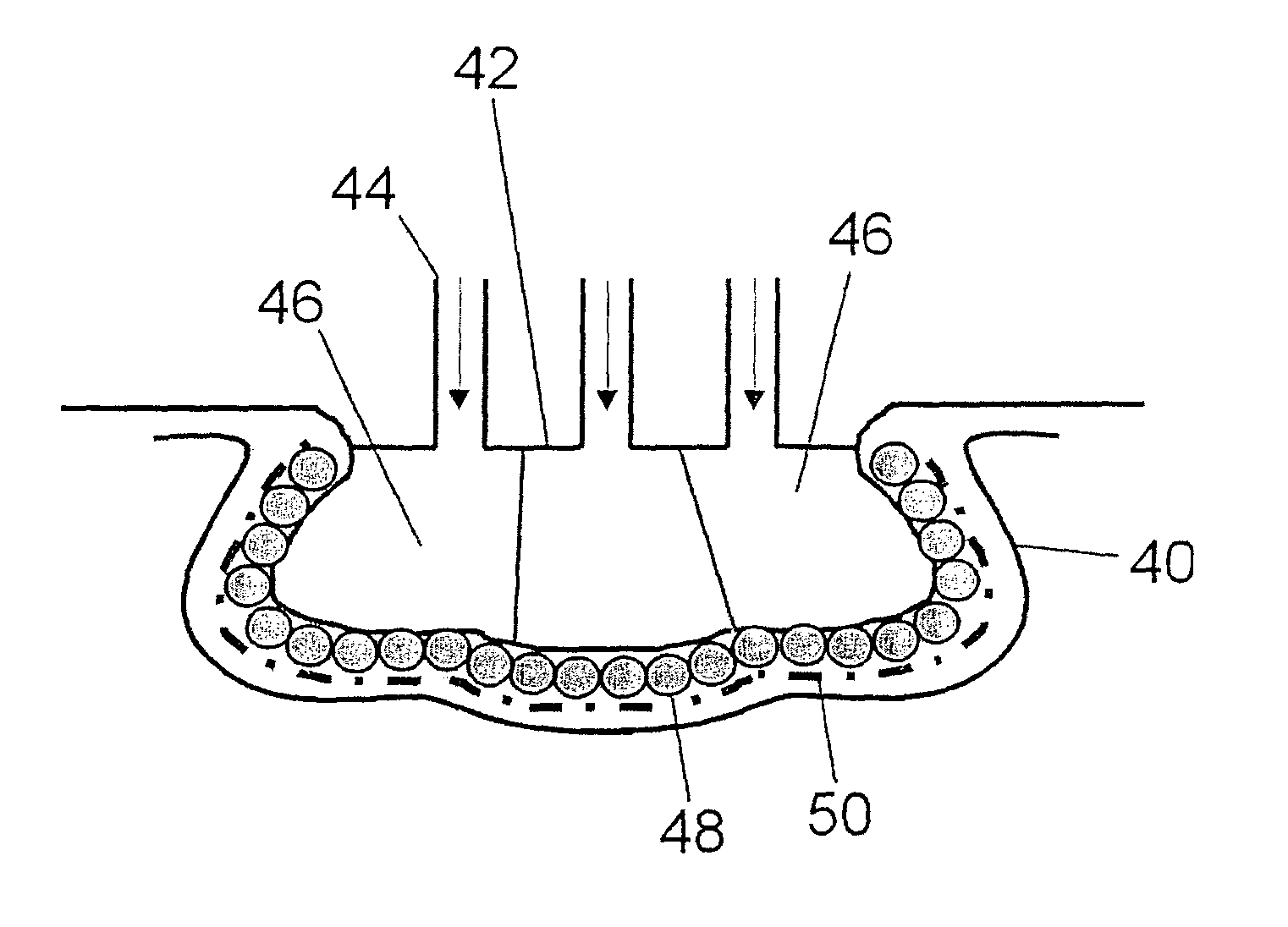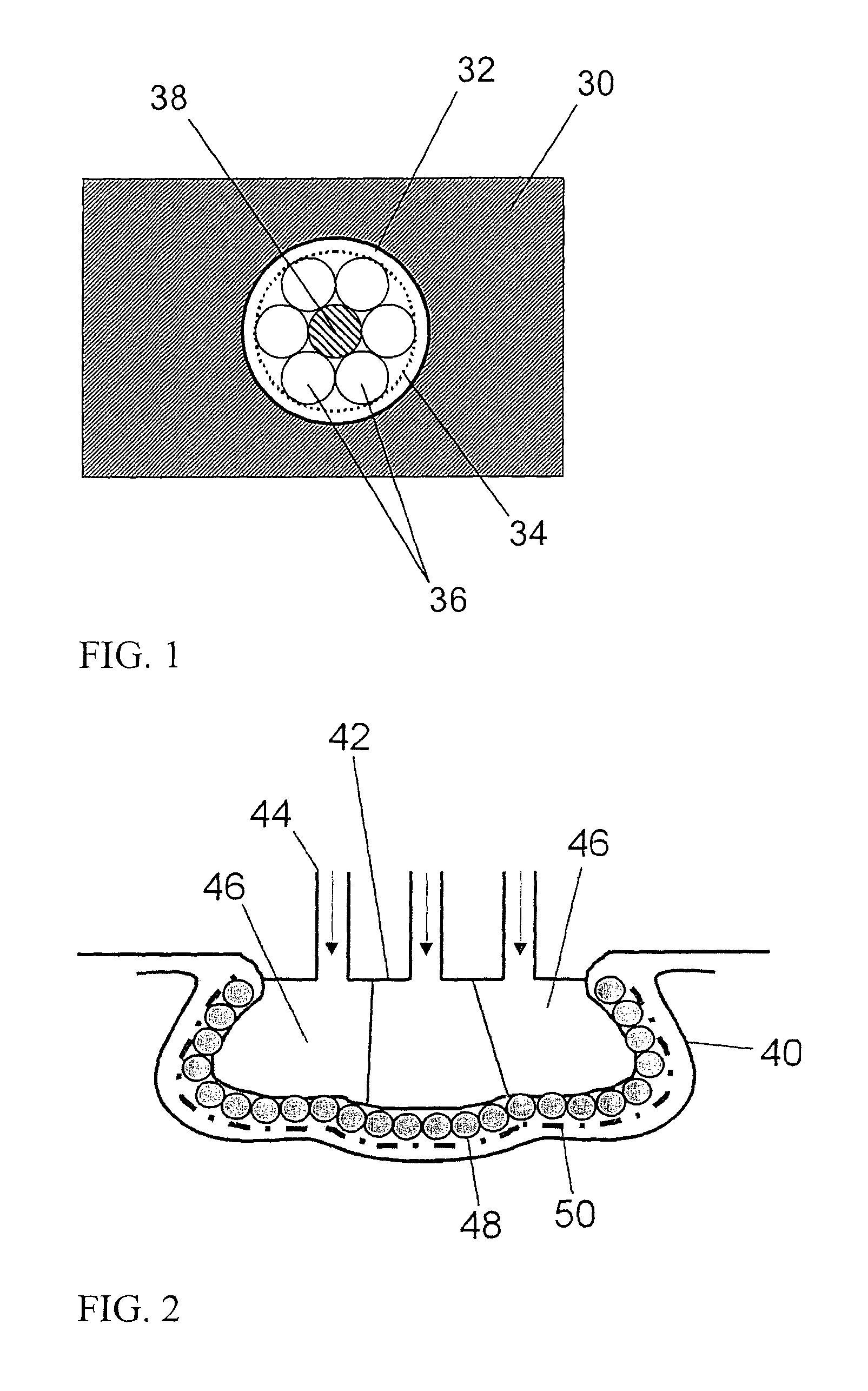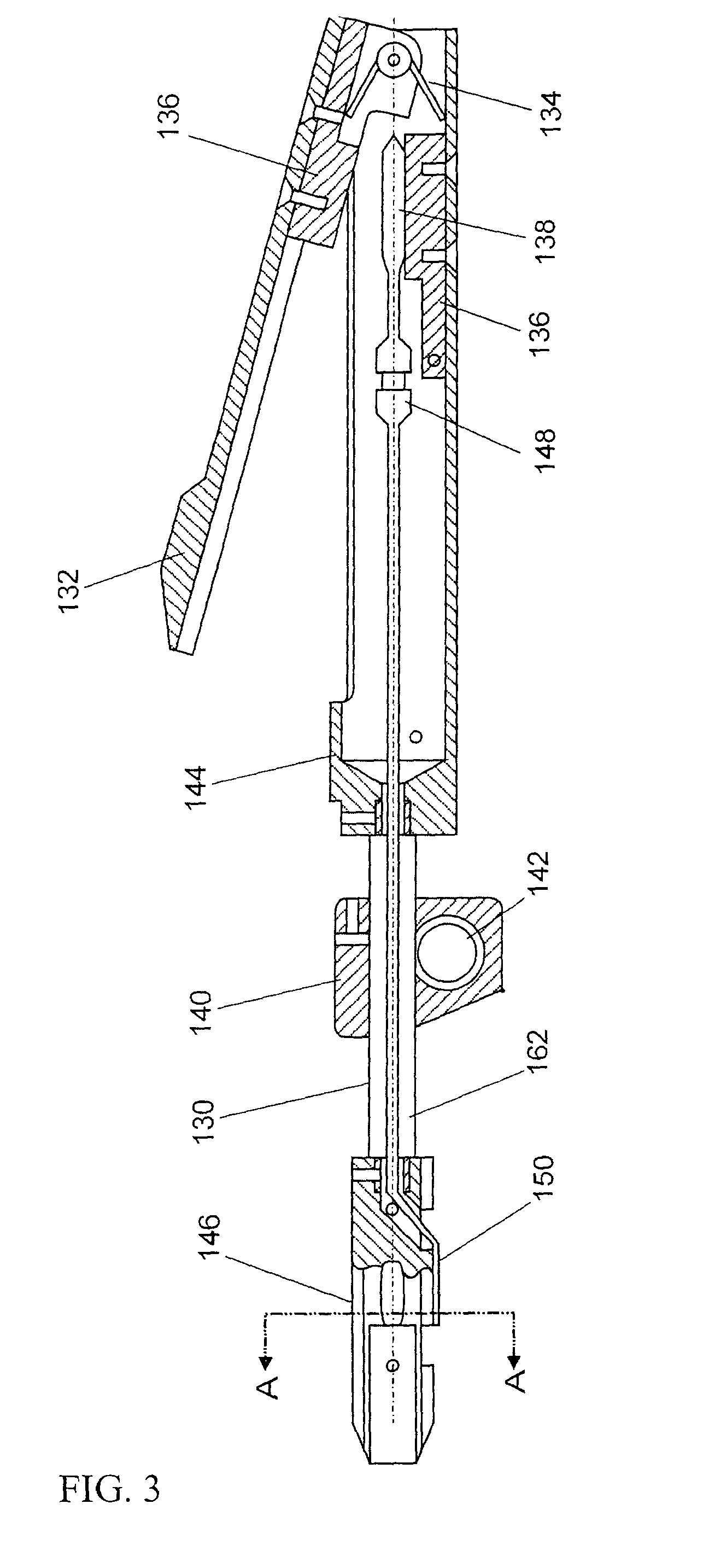Method for inspecting a channel using a flexible sensor
a flexible sensor and channel technology, applied in the direction of fluid pressure measurement, instruments, magnetic variables, etc., can solve the problems of deformation, local variations in pressure on the sensor, lack of adhesion of the array to the surface of the material under test, etc., to facilitate the insertion of the probe and reduce the mechanical stress on the sensor associated
- Summary
- Abstract
- Description
- Claims
- Application Information
AI Technical Summary
Benefits of technology
Problems solved by technology
Method used
Image
Examples
Embodiment Construction
[0022]A description of preferred embodiments of the invention follows. The disclosed invention addresses the limitations of using compressible solid substrates for inspection of confined material surfaces. Probe assembly structures and methods for using these assemblies are described which provide improved inspection capabilities and extending the useful life of the sensor. The probe assemblies use fluid substrates enclosed in relatively rigid pre-shaped membrane materials or combinations of fluid filled “balloons” with compliant solids, such as foam or elastomers. Sensors placed on the surface of the shuttle are then used to inspect the material for flaws and defects or to characterize the material properties, such as coating thickness, electrical conductivity, or magnetic permeability. Detailed descriptions of these “balloon” probes are provided in U.S. patent application Ser. No. 10 / 348,339, filed Jan. 21, 2003, the entire teachings of which are incorporated herein by reference.
[...
PUM
 Login to View More
Login to View More Abstract
Description
Claims
Application Information
 Login to View More
Login to View More - R&D
- Intellectual Property
- Life Sciences
- Materials
- Tech Scout
- Unparalleled Data Quality
- Higher Quality Content
- 60% Fewer Hallucinations
Browse by: Latest US Patents, China's latest patents, Technical Efficacy Thesaurus, Application Domain, Technology Topic, Popular Technical Reports.
© 2025 PatSnap. All rights reserved.Legal|Privacy policy|Modern Slavery Act Transparency Statement|Sitemap|About US| Contact US: help@patsnap.com



